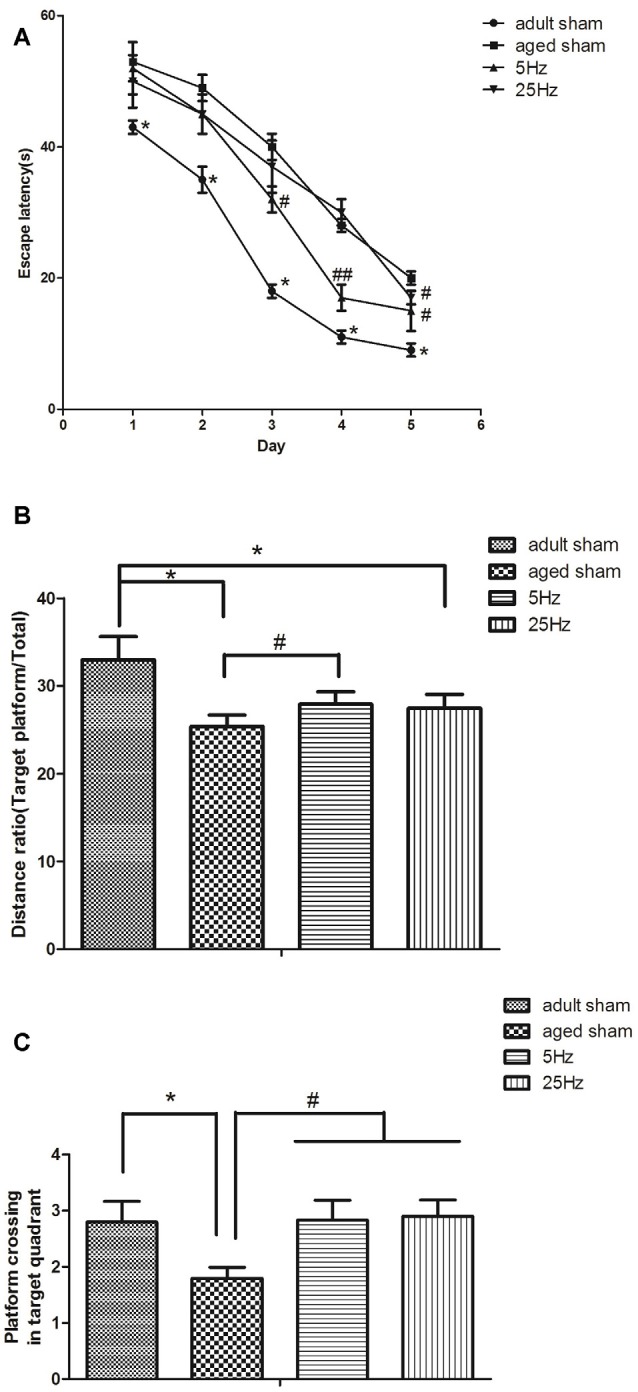Figure 1.

Repetitive transcranial magnetic stimulation (rTMS) is beneficial for spatial learning and memory in mice, as tested by the Morris water maze (MWM). (A) The mean escape latency in the spatial learning test. *P < 0.05 aged sham group vs. adult sham group; #P < 0.05 and ##P < 0.01 compared to the aged sham group. (B) The ratio of swimming distance in the original quadrant to the total distance (distance ratio). *P < 0.05 vs. adult sham group; #P < 0.05 vs. aged sham group. (C) The time of platform crossing in the original quadrant. *p < 0.05 vs. adult sham group; #P < 0.05 vs. aged sham group. Data are shown as mean ± standard error of the mean (SEM); n = 15 for each group.
